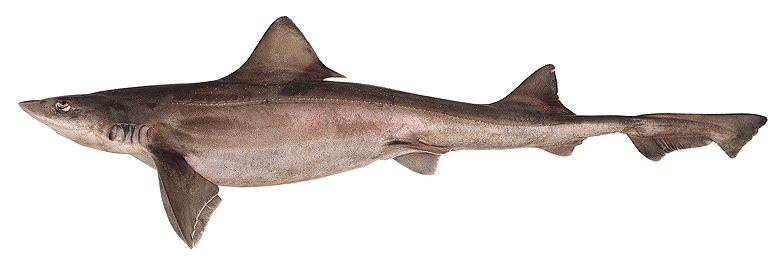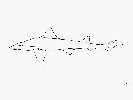Mustelus schmitti
Springer, 1939
Narrownose smooth-hound
Classification: Elasmobranchii Carcharhiniformes Triakidae
Reference of the original description
Two new Atlantic species of dog sharks, with a key to the species of Mustelus. Proceedings of the United States National Museum, 86(3058), 461–468
Two new Atlantic species of dog sharks, with a key to the species of Mustelus. Proceedings of the United States National Museum, 86(3058), 461–468
Image of the original description
No image in first description.
No image in first description.
Synonyms / new combinations and misspellings
Mustelus schimitti
Mustelus schimitti
Types
Mustelus schmitti
Holotype: USNM: 106640 (old: 87680) ; Paratype: USNM: 87782; USNM: 87680; USNM: 55582;
Mustelus schmitti
Holotype: USNM: 106640 (old: 87680) ; Paratype: USNM: 87782; USNM: 87680; USNM: 55582;
Description :
Citation: Mustelus schmitti Springer, 1939: In: Database of modern sharks, rays and chimaeras, www.shark-references.com, World Wide Web electronic publication, Version 12/2025
Please send your images of "Mustelus schmitti" to info@shark-references.com

Mustelus schmitti Springer, 1939, © Instituto Nacional de Investigación y Desarrollo Pesquero (INIDEP)

Mustelus schmitti Springer, 1939, © Instituto Nacional de Investigación y Desarrollo Pesquero (INIDEP)
Common names
 Gatuso,
Gatuso,  Gatuzo,
Gatuzo,  Emissole gatuso,
Emissole gatuso,  Narrownose smooth hound,
Narrownose smooth hound,  Narrownose smooth-hound,
Narrownose smooth-hound,  Canejo,
Canejo,  Cação,
Cação,  Cação-bico-doce,
Cação-bico-doce,  Cação-da-Patagónia
Cação-da-Patagónia
 Gatuso,
Gatuso,  Gatuzo,
Gatuzo,  Emissole gatuso,
Emissole gatuso,  Narrownose smooth hound,
Narrownose smooth hound,  Narrownose smooth-hound,
Narrownose smooth-hound,  Canejo,
Canejo,  Cação,
Cação,  Cação-bico-doce,
Cação-bico-doce,  Cação-da-Patagónia
Cação-da-Patagónia
Short Description
Original daiagonis after Springer [3013]: Similar in form to Mustelus canis but males reaching maturity at a small size (600 mm or less). Snout narrower. Fins broad; lower lobe of caudal not strongly developed, not acute; origin of the first dorsal in advance of the inner angle of the pectoral. Eyes smaller than in M. canis (horizontal diameter of orbit 2.5 percent of total length in average of five specimens as compared with 3.1 percent average for M. canis of comparable size); horizontal diameter of orbit greater than distance between the nostrils. Mouth broadly arched and rounded anteriorly in the adults; outer labial fold longer. Teeth paved, crowns not elevated in adults; accessory cusps present on the teeth of the young specimen, not on the adults examined. Dermal denticles similar in structure on the fiat surfaces of the body, typical 4-ridged, mth ridges reaching about two-thirds of the distance to the posterior apex. Color uniform gray, without Hght or dark spots or bands.
Original daiagonis after Springer [3013]: Similar in form to Mustelus canis but males reaching maturity at a small size (600 mm or less). Snout narrower. Fins broad; lower lobe of caudal not strongly developed, not acute; origin of the first dorsal in advance of the inner angle of the pectoral. Eyes smaller than in M. canis (horizontal diameter of orbit 2.5 percent of total length in average of five specimens as compared with 3.1 percent average for M. canis of comparable size); horizontal diameter of orbit greater than distance between the nostrils. Mouth broadly arched and rounded anteriorly in the adults; outer labial fold longer. Teeth paved, crowns not elevated in adults; accessory cusps present on the teeth of the young specimen, not on the adults examined. Dermal denticles similar in structure on the fiat surfaces of the body, typical 4-ridged, mth ridges reaching about two-thirds of the distance to the posterior apex. Color uniform gray, without Hght or dark spots or bands.
Human uses
fisheries: highly commercial; price category: medium; price reliability: reliable: based on ex-vessel price for this species
fisheries: highly commercial; price category: medium; price reliability: reliable: based on ex-vessel price for this species
Remarks
shark-references Species-ID=3821;
shark-references Species-ID=3821;
Parasites (arranged by Jürgen Pollerspöck)
Myxosporea
Monogenea
Cestoda
Nematoda
Copepoda
Myxosporea
- Sphaerospora sp. [28169]
Monogenea
- Calicotyle asterii (Szidat, 1970) Timofeeva, 1985 [17436] [22565]
- Erpocotyle schmitti Suriano & Labriola, 1998 [21196] [22565]
Cestoda
- Calliobothrium australis Ostrowski De Núnez, 1973 [7568] [8727] [25154] [31906]
- Coronocestus notoguidoi (Ivanov, 1997) [7578] [8727] [16430] [19536] [25154] [31906]
- Dollfusiella vooremi (Sao Clemente & Gómes, 1989) [16112] [21810] [25154] [31906]
- Eutetrarhynchus vooremi Sao Clemente & Gómes, 1989 [17924] [8727] [21220]
- Gyrocotyle maxima Macdonagh, 1927 [25154]
- Nybelinia lingualis (Cuvier, 1817) [17924] [21220] [25154]
- Orygmatobothrium schmittii Suriano & Labriola, 2001 [16427] [8727] [7602] [25154] [31906]
- Symcallio barbarae (Ivanov & Brooks, 2002) [7568] [8727] [21796] [25154] [31906]
- Symcallio lunae (Ivanov & Brooks, 2002) [7568] [8727] [21796] [25154] [31906]
Nematoda
Copepoda
- Achtheinus oblongus Wilson, 1908 [15942]
- Achtheinus pinguis Wilson, 1912 [7378]
- Lernaeopoda galei Krøyer, 1837 [15942]
- Nesippus orientalis Heller, 1868 [15942]

















